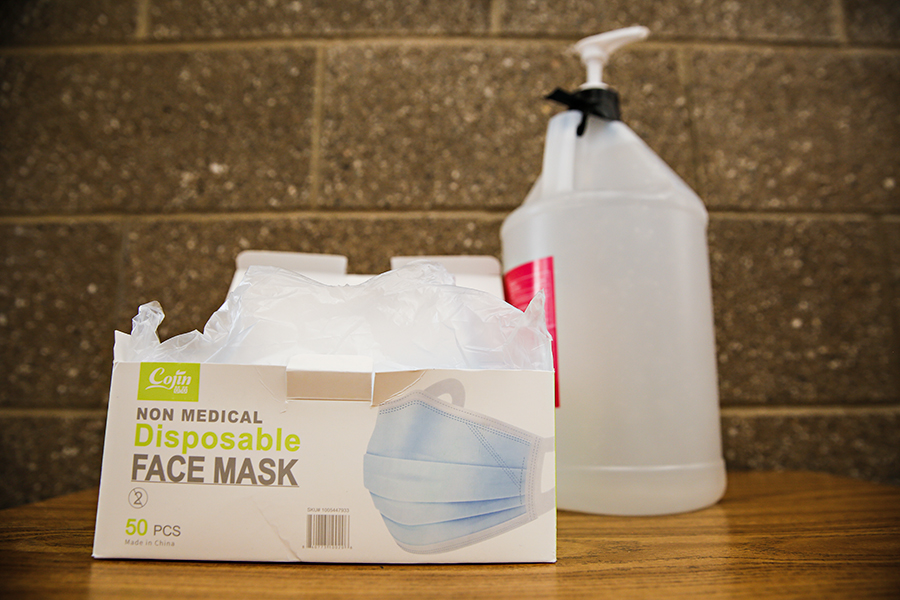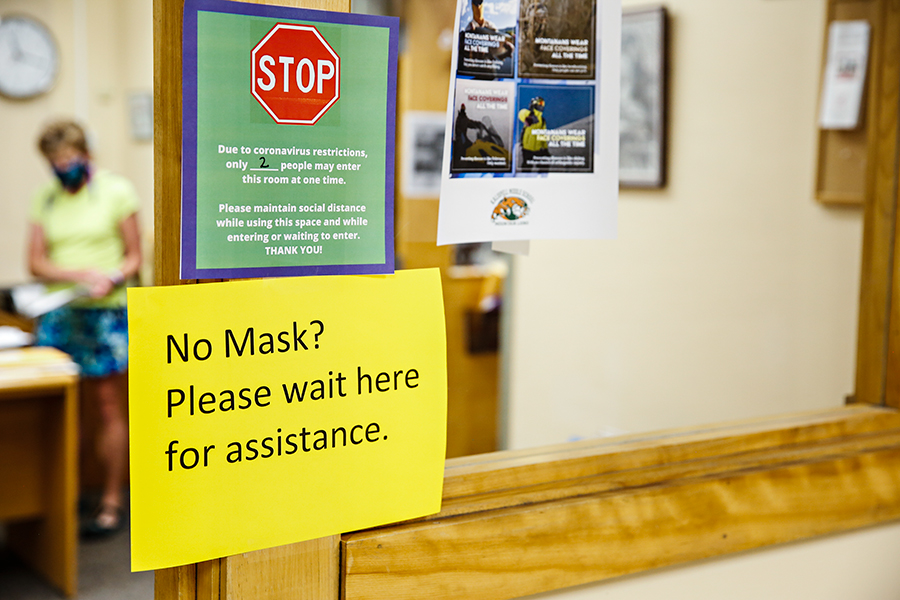What Happens When COVID-19 is Confirmed in Schools?
Advisory council of health experts and school officials is finalizing metrics that will guide responses to positive cases at local schools
By Myers Reece
Nobody disputes that a number of schools will inevitably have positive COVID-19 detections after reopening. How exactly districts will respond to those cases is less clear, as of now, although an advisory council of health experts and school officials is crafting metrics to guide response plans in Northwest Montana.
The council will convene on Sept. 1 to finalize the metrics. The format will have similarities to the Flathead City-County Health Department’s new color-coded COVID-19 community indicators, and will likely include a number of those categories, such as the county’s contact tracing capacity, active cases, hospital bed availability and more.
The state hasn’t outlined formal strategies or protocols for schools’ responses to positive detections, so it’s up to districts to craft their own. Schools in Northwest Montana will rely on the advisory council’s metrics as their guiding framework.
Even once the details are outlined, however, the responses will depend on circumstances, taking into consideration a wide range of factors.
For instance, if a school falls into the “red” level of concern in a certain area, such as a high number of cases or quarantines, administrators wouldn’t automatically take a specific action. They would weigh all the metrics and data, as well as the unique characteristics and trends of the school, district, community and situation. An outbreak across multiple grade levels, or perhaps even several schools, would warrant a different response than cases restricted to a single class.
Schools will also use local medical professionals as resources, while Kalispell’s school district has formed a task force to guide decision-making and actions.
The metrics are expected to include concerned cases (visits to the nurse’s office), quarantines, positive cases among students and staff, substitute staff availability, staff on paid leave and perhaps additional categories for activities.

Spreadsheets will be continually updated with those statistics, and administrators will examine the metrics as they determine next steps, which could include continuing regular operations, only without the presence of the quarantined contacts, both students and staff.
If a positive case is confirmed before the Sept. 1 meeting, Kalispell Superintendent of Schools Micah Hill said he would consult with the health department to make a decision.
The scope of the quarantines and ability to supply adequate substitute teachers will factor into decision-making. Widespread absences and teacher-less classes could potentially lead to a number of scenarios, including full class quarantines, temporary course removals, complete school closures or even district-wide shutdowns.
Bigfork Superintendent of Schools Matt Jensen raised the hypothetical scenario of five teachers out of school due to COVID-19 and unable to work remotely without enough subs to fill their spots.
“That might put us into a situation where we go into virtual and cancel classes, or postpone and temporarily remove the classes,” Jensen said, adding that individual situations will be distinctive and must factor in the variables of the people involved.
Contact tracing will be a critical factor. In a school environment, Jensen said contact investigations could reveal anywhere between 25 and 100 mandatory quarantines stemming from a single positive case, depending on a number of variables, including whether the student is in extracurricular activities.
Jensen, who is also the president of the Montana Association of School Superintendents’ Northwest Region, believes Bigfork’s flexible reopening plan leaves the district’s schools well-positioned to react without significantly hampering instruction.
“We’d still be able to maintain onsite and virtual learning at the same time even if our onsite number of students fluctuates quite a bit,” he said.
But Jensen said one big unknown is how many students wouldn’t return to onsite learning by choice in the event of positive cases, in addition to the mandatory quarantines. A survey sent out by the district this summer asked if parents would send their kids back in that situation, and about 50% said they were unsure if they would.
Jensen said Bigfork’s policy allows for families to switch from onsite to remote.
“We recognize parents haven’t gone through this either, so we’re giving parents some space to make the decision for what they feel is best for their families,” Jensen said.
Other districts, however, are asking parents to commit to either remote or in-person for a fixed period of time, such as a trimester or semester, because of the difficult logistics of having students flow back and forth between instruction models.
After adding up mandatory quarantines and students choosing not to return to class, it’s clear that a single case, let alone multiple cases, could heavily impact school operations.
Given the Flathead City-County Health Department’s specific role in conducting contact tracing investigations and its broader function as the region’s principal public-health entity, the department’s findings and rulings will be instrumental in school responses to COVID-19. And the department’s round-the-clock operations mean districts must be prepared to adjust at all times, according to Hill.
“They might call at 9 at night and say, ‘We think you have to shut down the school,’” Hill said. “That’s the hard part. This could happen on a moment’s notice, so families have to be able to react and adjust whenever that happens.”

The health department’s own community indicators have in recent weeks noted that its contact-tracing capacity is stretched thin, which could prove problematic if there’s an influx of school-related contact investigations.
Moreover, schools’ own COVID-19 resources may be tested. For one, school nurses, tasked with first-response triaging of students sick with any number of illnesses, will add the complexities of a novel virus that produces symptoms similar to common colds and flus to their already central health-care role.
And that’s if a school has a nurse, which isn’t the case in smaller districts. Tami Ward, principal of Creston School, said she and the district clerk will take on those responsibilities, including twice-a-day temperature checks, daily health screenings and trying to sort through symptomology, following county health department guidance and using health-care providers as resources when needed.
In general, small districts face unique challenges in sifting through COVID-19 guidance and implementing it.
“The disadvantage of being a smaller school is that bigger districts have multiple people to help absorb that work, but in a smaller district we don’t have the personnel to absorb the extra duties and extra work,” Ward said. “That’s been the most challenging.”
Kalispell Regional Healthcare (KRH) let administrators know last week that it’s willing to commit resources to help local schools, which could potentially include nursing and a variety of other forms of assistance. Hospital representatives were slated to meet with school administrators this week to discuss the matter further.
“KRH has provided health and wellness resources to our local schools in many ways over the years,” KRH Director of Communications and Marketing Mellody Sharpton said. “It’s our responsibility to be a good community partner, especially now, and work with schools to support the health needs of their students and staff.”
The advisory council that is hashing out the metrics includes Hill and Jensen, as well as superintendents from Columbia Falls, Whitefish and Evergreen, the head of Stillwater Christian School and Kalispell public schools’ director of operational accountability. It also includes a parent with a Ph.D. in epidemiology, a nurse who works at North Valley Hospital and the Columbia Falls school district, and the county’s health officer and deputy health officer, Tamalee St. James Robinson and Kerry Nuckles.
Rounding out the council are Kalispell Regional Healthcare Chief Nursing Officer Ryan Pitts and Chief Executive Officer Craig Lambrecht.
While the planning process for safely reopening has been difficult, and new dilemmas will emerge once school starts, Ward said her teachers and staff are excited for class to begin on Aug. 26.
“It’s so wonderful to see the staff working together and students coming in,” she said. “Our community has been so supportive, and we’re ready to go.”